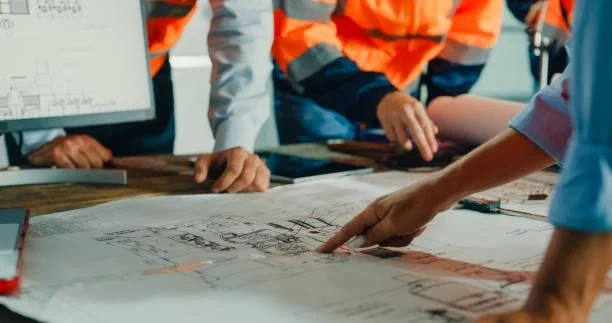Engineering Peer Review: Independent Oversight That Protects Your Project
When Precision Matters, Outside Expertise Pays Off
In the world of commercial construction, a single overlooked design flaw can cost tens of thousands—if not millions—in rework, delays, or liability. Structural miscalculations, code misinterpretations, or simple coordination errors between disciplines often go unnoticed until they’re physically built into the project. At that point, fixing the problem isn’t just expensive, it’s disruptive.
That’s why more developers, architects, and owners are turning to engineering peer review as a proactive strategy to avoid those pitfalls. Far from being a bureaucratic step, peer review is a smart layer of risk management that provides an objective, expert perspective on the soundness of your design.
Exactus Engineering serves as that independent partner, offering technical oversight, local code knowledge, and constructability insights to identify potential issues before they become costly field corrections.
Whether it’s a high-rise with complex load paths or a tilt-up warehouse in a seismic zone, peer review ensures your plans hold up to real-world conditions—not just paper assumptions.
Discover how peer review can enhance the success of your commercial project before the first pour.
What You’re Getting With a Peer Review
So, what does a peer review actually involve? Think of it as a second layer of professional engineering—not to duplicate the original design, but to validate it.
A peer review from Exactus typically includes:
Structural Validation: We independently confirm that the building will perform as designed under all required loads—gravity, lateral, seismic, wind, and more.
Code Compliance Review: We ensure the design aligns with the most current International Building Code (IBC), local amendments, and specialty standards (like ASCE 7 or ACI 318).
Constructability Feedback: Our team identifies practical concerns that could complicate execution in the field—such as tight tolerances, sequencing issues, or conflicts between structural and architectural elements.
This isn’t red tape—it’s risk reduction. Our role is to challenge assumptions, identify blind spots, and help refine the design so it performs safely, efficiently, and economically.
And importantly, we communicate this feedback in a constructive, solutions-oriented manner. Our redline markups and commentaries are not critiques—they’re guidance from professionals who want your project to succeed.
Why Developers and Architects Rely on Peer Review for Commercial Builds
In commercial construction, every decision echoes downstream. A seemingly minor design gap can escalate into RFIs, change orders, and schedule slips once construction begins. This is why experienced developers and architects increasingly include peer review as a standard step before breaking ground.
Here’s how a peer review strengthens your project:
Prevents Expensive Rework Peer review catches potential structural or coordination issues before they become part of the permit set. Identifying and correcting these issues early prevents the need for re-engineering or rebuilding on-site.
Reduces Bid-Phase Ambiguity Incomplete or unclear drawings result in inflated or inconsistent bids. Peer review clarifies and tightens documentation, helping contractors price the work accurately and fairly.
Minimizes Risk on Unfamiliar Projects Working with a new architectural partner? Designing a type of building you haven’t tackled before? Peer review gives your team the confidence that key load paths, code requirements, and detailing are accurate, no matter who designed the plans.
Boosts Stakeholder Confidence Investors, lenders, and municipal plan reviewers often see peer review as a mark of professionalism. It signals due diligence and can accelerate approvals or financing milestones.
In short, peer review isn’t just a quality check—it’s a strategic tool for smoother permitting, predictable budgets, and more reliable construction outcomes.
What the Peer Review Process Looks Like With Exactus Engineering
At Exactus, we’ve developed a streamlined, respectful process that fits within your project’s fast-moving schedule—while still delivering detailed, actionable feedback. Here’s what you can expect:
Project Intake and Document Collection Once engaged, we gather all relevant structural drawings, design calculations, specifications, and applicable code parameters. If needed, we’ll coordinate directly with your design team to complete the document set.
Line-by-Line Code and Structural Review Our licensed structural engineers thoroughly examine every major element, from gravity systems and lateral load resistance to foundation assumptions and detailing practices. We reference the IBC, ASCE 7, AISC, ACI, and other applicable codes.
Collaborative Feedback Session Rather than deliver a cold report, we hold a live review meeting to walk through key findings. This ensures your team understands the rationale, can ask questions, and can align on solutions quickly.
Final Report With Markups You’ll receive a PDF copy of your plans marked with comments, redlines, and recommended revisions. Each item is categorized by severity (code-required vs. best-practice) and organized for easy implementation by your design team.
We’re here to support—not replace—your designers. Our goal is to help you move forward with confidence, not stall progress with friction.
Timing Is Everything — Here’s When to Engage
One of the most frequent questions we receive is: “When should we bring in a peer review?” The truth is, timing can dramatically affect both the cost and the impact of the review.
Here’s a breakdown of optimal stages to engage:
Pre-Permit Phase (Ideal) Before your structural drawings are submitted for permitting, peer review can catch code violations, missing details, or coordination gaps that would otherwise trigger plan check comments. Fixes at this stage are fast, clean, and inexpensive.
Early Bid Phase If drawings are already submitted, reviewing them before sending out for pricing can still provide major benefits. Peer review helps eliminate ambiguities that cause inconsistent bids or inflated contingencies. Contractors appreciate clarity—and so does your budget.
Due Diligence or Owner’s Rep Oversight During acquisitions or design audits, a rapid peer review provides peace of mind that a project has been engineered correctly. This is especially useful for institutional investors or national clients unfamiliar with the local design team.
Waiting too long means that issues become harder (and costlier) to fix. Redesigning a steel connection on paper is a minor effort. Reworking it on-site after delivery and erection? That’s an entirely different story.
At Exactus Engineering, we’re built for flexibility. Whether you need a two-week turnaround or a deep dive into complex seismic provisions, we adjust our scope and schedule to meet your needs, without compromising on rigor.
Planning to submit drawings soon? Let us take a look before you do. Contact our team to align your timing with ours.
Common Errors Peer Review Can Prevent
You’d be surprised how often small oversights snowball into big field problems. These are just a few of the recurring issues we flag in peer reviews:
Insufficient Lateral Load Paths Missing bracing or unclear shear wall continuity can lead to inadequate resistance during seismic or wind events.
Misalignment Between Structural and Architectural Elements Beams placed inside doorways, columns inside stairs, or inconsistent elevations all indicate poor coordination.
Outdated Code References Designers sometimes reference older editions of the IBC or ASCE, leading to missed updates in load criteria or detailing.
Undersized or Unspecified Members From glulam beams to cold-formed studs, we often see members that don’t meet deflection or capacity standards under real loads.
MEP/Structural Conflicts Mechanical chases through beams or ductwork cutting through critical diaphragm zones are frequent misses without 3D clash detection.
These aren’t fringe cases—they’re everyday risks that peer review can neutralize long before concrete trucks arrive.
What Sets Exactus Engineering Apart
Not all peer review firms are created equal. At Exactus Engineering, we combine deep technical experience with a practical, collaborative approach that respects your design team’s intent while raising the bar on quality.
Here’s what distinguishes us:
Decades of Commercial Structural Review Experience Our leadership team has reviewed hundreds of projects—from high-rise towers and industrial parks to educational campuses and healthcare facilities. We know where to look and what to ask.
Multi-State Licensure and Regional Code Fluency Building codes may be standardized, but their interpretation often varies by jurisdiction. We’re licensed in multiple states and maintain strong relationships with plan reviewers and code officials across regions.
Responsive Turnaround, Even Under Tight Deadlines Need review before a permit submission next week? We’ve built internal systems to triage scope, mobilize resources, and deliver concise, prioritized findings on short notice—without sacrificing rigor.
Respectful, Solution-Oriented Collaboration We’re here to support your design team, not compete with it. Our peer reviews are professional, courteous, and actionable. Many clients tell us they actually enjoy the process—and that’s by design.
Our work isn’t about catching mistakes for the sake of it—it’s about preventing problems before they threaten your budget, schedule, or project success.
Let’s Take a Look at Your Drawings
You’ve put significant time and capital into your building design—let us help you protect it. Whether you’re submitting for permit, preparing for bids, or acquiring a project mid-stream, our team is ready to review your drawings and flag potential risks before they turn into expensive changes.
We’re not just here to point out problems. We’re here to solve them—together.Send us your plans or request a no-obligation proposal to get started.




